The steps of the overall design of the packaging machine are: arranging the actuator, transmission system and operating parts, determining the support form and drawing the overall layout. This article mainly analyzes the structural design, including support forms, forming mechanism design, and other structural parts design.
That is, the packaged goods measurement and supply system, packaging material sorting and supply system, main conveying system, packaging execution mechanism and finished product extraction mechanism are arranged.
First of all, according to the packaging process roadmap, each execution member should be arranged on the upper part of the whole, in order to observe the implementation, and the particulate matter flows downward due to gravity. When installed at a higher position, it can flow down to improve efficiency. In this regard, the following two points must be noted:
1) In order to make the actuator simple and compact, the components and kinematic pairs of the mechanism should be minimized, and its geometric size and space occupied should be minimized. The prime mover should be as close as possible to the actuator.
2) In order to simplify the transmission system, facilitate testing and maintenance, and reduce the impact of the damage of the transmission parts on the transmission pins, it is required that the original parts be distributed as centrally as possible on one or a few shafts. In fact, the execution components are often scattered, so that their prime movers are more difficult to focus. At this time, several similar actuators can be collectively arranged into a large component. In this way, a packaging machine is equivalent to combination of a large number of large parts.
The supporting parts of the packaging machine include a base, a box, an upright and a beam. The role of the support is to properly position the relevant components and maintain their relative working positions. The requirements for the support are as follows:
1) Sufficient rigidity, the deformation of the support when bearing a large load does not exceed the allowable value;
2) Sufficient anti-vibration, the machine can work stably and reliably;
3) Moderate quality, striving to save materials and easy to carry;
4) Facilitate the assembly and debugging, operation and maintenance of parts and components, as well as the transportation and installation of the machine;
5) Beautiful appearance, giving people a sense of harmony, shape, stability and safety. The commonly used support types are “——” type, “1” type, and “mouth” type. Due to the limitation of the working environment, and the production is only batch production in small batches, we choose the “1” type, which is the three-dimensional type. It occupies a small area, is flexible in operation, and has compact procedures, which meets our design requirements.
The circular cross section has high torsional stiffness, but its bending strength is poor, so it should be used for torsional frames. The I-shaped section has high bending strength, but low torsional resistance, so it is suitable for frames that can withstand pure bending. The square cross-section is resistant to bending and torsion, which is lower than that of I-shaped and circular cross-sections respectively, and has a certain comprehensive performance. Whether circular, square or rectangular, the rigidity of the hollow section is always greater than that of the solid section, so the support should be made hollow.
In addition, the cross-sectional area remains the same, increasing the outline size and reducing the wall thickness. Even if the material is far from the neutral axis, it can improve the bending resistance and torsional rigidity of the cross section. From a structural point of view, because the hollow rectangular internal cavity is easy to install other parts, the cross section of many frames often adopts a square or rectangular cross section. Comparing the groove section steel with the I-shaped section, the bending strength is not much different, and the torsional strength is higher than that of the I-shaped section.
The bag-making former is a key component of the automatic bagging machine. Its role is to transform the flat packaging film material into a cylindrical shape and produce a sealing edge to facilitate the boring entry of the packaging. The selection, design, and use of the bag-making former directly affect the packaging form of the product, the shape and size of the packaging bag, the quality of the packaging, and its layout. Therefore, the selection and design calculation of the former is very important. There are many types of bag-type containers, and this design uses a three-side sealing type. According to the different packaging size range of the bag making machine, the forming machine can be divided into two types: adjustable bag making machine and special bag making machine. The structural size of the adjustable bag-making former can be adjusted to apply to product packaging of various sizes and specifications within a certain range. The structure of the special bag making device is not adjustable, and it is only suitable for product packaging with a single size or small size change. In this design, the width of the bag type is 30-80mm, and the change is small, so a special bag making device is selected.
The key to designing and manufacturing a shaper is:
1) Minimize the resistance of the film through the mold, so that the film does not produce longitudinal or horizontal tensile deformation and wrinkle.
2) Ensure that the film fits naturally, without stretching, and without passing through the molder, and is naturally rolled up and formed correctly.
3) The structure is simple and reliable, easy to manufacture and easy to debug.
Special bag shapers mainly include lapel shapers, U shapers, elephant nose shapers, V shapers and triangle shapers. There are advantages and disadvantages in the structure and performance of different molders, and the applications are also different.
1) Lapel shaper. After the flattened film is drawn through the former, it is overlapped and abutted into a cylindrical shape. The lapel shaper has a large forming resistance, which easily deforms, wrinkles or tears the film. It has poor adaptability to plastic films and good adaptability to composite films. It is often used for packaging of powdery, granular materials and some liquid materials. Vertical pillow type packaging machine is used more. Each type of lapel shaper can only form one type of bandwidth. When the bandwidth specifications change, the corresponding size of the shaper needs to be replaced, and the design, manufacturing and debugging are more complicated.
2) Triangle former. It is formed by isosceles acute-angled triangular plate and U-shaped pole connected to the base plate. The shape of the shaper is used to force the flattened film to be approximately half-shaped. The triangle shaper has a simple structure, has good adaptability to models, bag specifications and materials, and can adapt to large changes in the size of packaging bags. Only the upper and lower positions of the substrate can be adjusted during adjustment. Vertical, bedroom intermittent or continuous three-sided, four-sided bag making machines are used.
Under normal circumstances, the roll film is pulled by the vertical sealing roller and enters the bag-making molder through the guide roller to form a paper tube. The longitudinal sealing roller seals the butt edges of the paper tube while pulling. Subsequently, the horizontal sealing roll is closed by the horizontal sealing roller to perform the horizontal sealing cutting. Similarly, each horizontal sealing action can simultaneously seal the lower mouth of the upper bag and the upper mouth of the lower bag, and cut off and separate. The filling of the material is completed before the paper tube is pulled down by the longitudinal seal to the horizontal closure.
The granule packaging machine is a widely used model. Because of the rationality and scientificity of its packaging principle, it has become a more widely used design solution. According to this packaging principle, a variety of bag types can be designed. For example, a pair of vertical sealing rollers are added, so that the two pairs of vertical sealing rollers are symmetrically arranged on both edges of the paper tube, and two longitudinal sealing seams are formed by pulling the vertical sealing at the same time. This bag making method is mainly based on simplifying the shaper, which makes the processing of the shaper simple and saves costs. A pair of symmetrical shapers and two paper rolls are used to feed paper on both sides. The packaging is symmetrical and beautiful, which plays a role of symmetrical beauty. In summary, a vertical continuous bag-making four-side sealing and packaging machine is adopted, which combines vertical sealing and traction into two pairs of vertical sealing rollers, which saves space, improves efficiency, and simplifies the structure. Taking into account the convenience, low cost and other characteristics, this time choose vertical continuous bag making four-side sealing packaging machine.
Transmission system scheme design To realize the whole process of packaging, it is mainly to realize the traction and film removal, feeding, sealing and cutting of packaging. In other words, from the plastic roll to the final product, the following process is required.
After the power is output from the reducer, the main shaft is driven by a belt drive, and then distributed by the main shaft to form a three-way transmission, which drives the quantitative feeder 8, the vertical sealing roller 6, and the horizontal sealing roller 5, respectively. The three-way transmission is as follows:
1) The main shaft Ⅰ drives the gears Z52 and Z20 of the double gear through the gear Z20, and then transmits to the gear Z36 drive shaft VI through the double gear Z52 and Z36, so that the quantitative feeder 8 rotates.
2) The main shaft Ⅰ drives the continuously variable transmission shaft Ⅱ through the bevel gear Z30. The output shaft Ⅲ of the transmission. After the differential transmission device, the compensation speed output by the servo motor 11 is integrated, and then a pair of incomplete gears Z60 are used to drive the shaft V to rotate, thereby driving the vertical sealing roller 6 to rotate relatively.
3) The main shaft I drives the eccentric sprocket mechanism 4 of the shaft III through the bevel gear Z36 to output an unequal speed motion, drives the gear Z18, and drives the horizontal sealing roller to rotate relatively through the gear Z22 and a pair of Z30. By adjusting the eccentric value of the eccentric sprocket, the heat sealing speed can be adjusted.
The traction force acting on the vertical sealing roller should be equal to the force that the roller receives from the plastic film, so that the plastic film can slide uniformly.
Heat seal design
Plastic film and its composite materials are the most commonly used packaging materials in automatic bag-making packaging machines, especially multilayer composite films, because of its good air tightness and high strength, they are widely used in food packaging.
The sealing of the plastic film is performed by hot-melt sealing. The specific operation is: heating the two contact surfaces of the plastic film so that they are in a molten thermoplastic state, and then applying pressure to the sealing part to seal the two films. Face fusion seal is firm. The factors that affect the quality of the seal are mainly the heating temperature, the pressure of the seal and the action time. There are various methods of heat fusion sealing. The most commonly used are resistance heating and pulse heating. In addition, there are high frequency electric heating sealing, ultrasonic heating sealing, electromagnetic heating sealing and infrared heating sealing. Each method is applicable to a range of plastic materials. In automatic bag-making, filling and packaging machines, the resistance-heating hot-melt sealing method is widely used because of its simple mechanism and convenient control. Moreover, most of the films used for food packaging are polyethylene and its composite materials, that is, polyethylene is mainly used as a heat-sealing material, so the resistance heating sealing method can fully meet the requirements.
There are two sealing devices in the continuous bag making and packaging machine: vertical sealing device and horizontal sealing device, which realize the longitudinal seam sealing and transverse sealing cutting of the packaging bag respectively. They all use resistance heating.
Design and calculation of longitudinal sealing roller
In a continuous automatic bag making, filling and packaging machine, since the film is continuously conveyed, the longitudinal seam sealing is performed continuously. To this end, two pairs of roller-type resistance heating hot-melt sealers are used to achieve continuous longitudinal sealing. Here, the hot-melt sealing roller not only completes the longitudinal heat-sealing of the packaging film bag, but also plays a role of pulling and conveying the packaging film. In other words, traction and longitudinal sealing are performed simultaneously, and the traction roller is also a longitudinal sealing roller.
On the sealing cylindrical surface of the vertical sealing roller, a uniform and fine texture is processed to increase the firmness of the seal, make the heat seal beautiful and ensure the quality. In addition, since the longitudinal sealing roller is in a heated state for a long time during work, and performs continuous relative rolling operation, it needs to have good comprehensive mechanical properties. In actual production, alloy structural steel processing can be used, such as 40Cr and other steels.

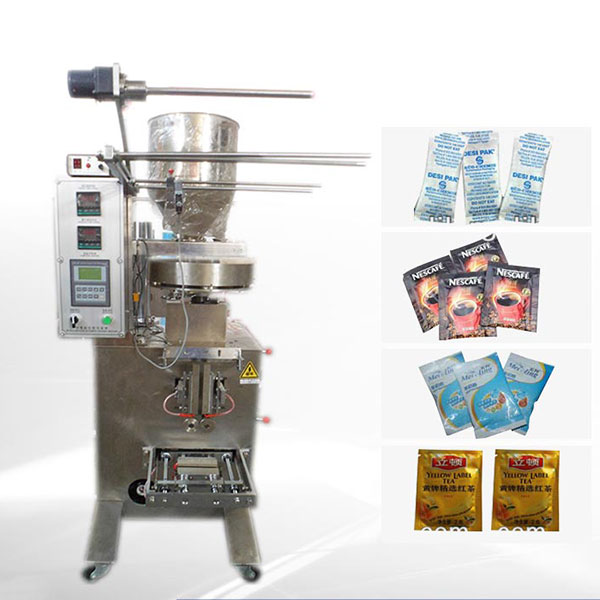
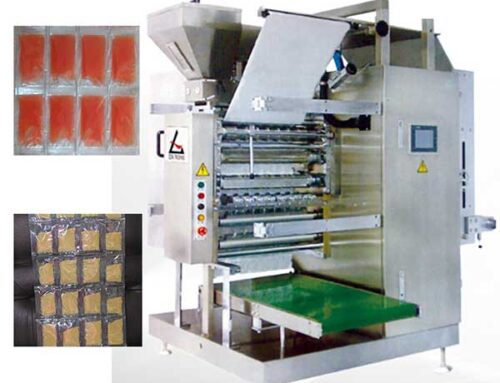

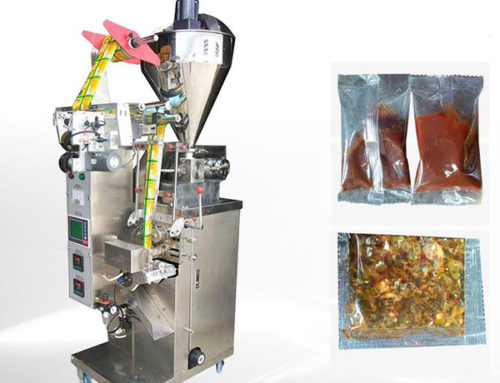
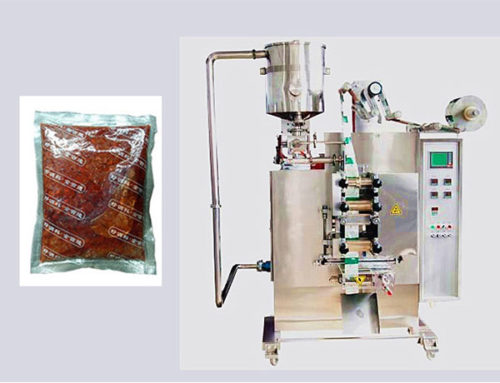
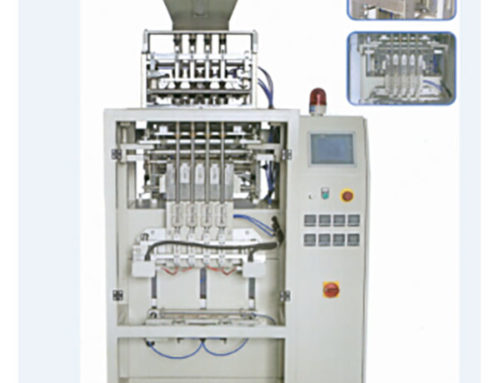
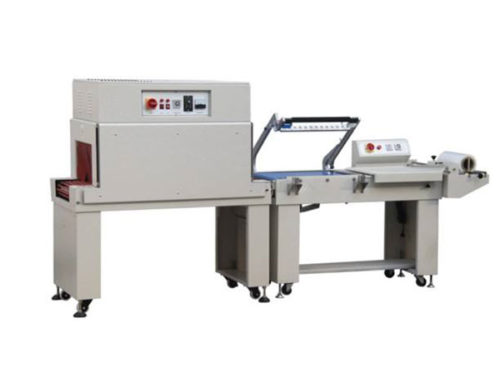

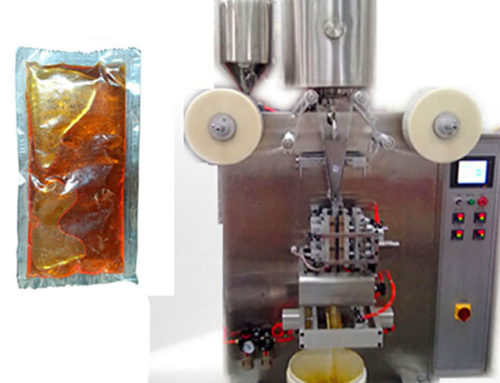
Leave A Comment